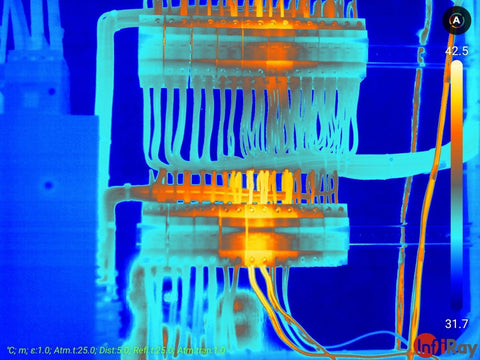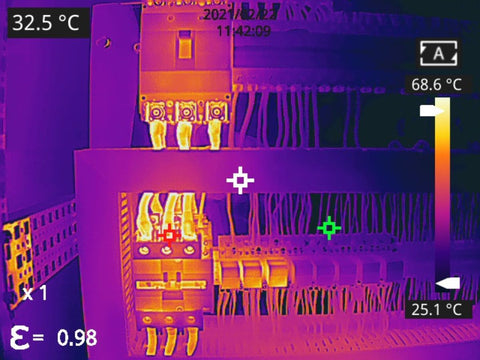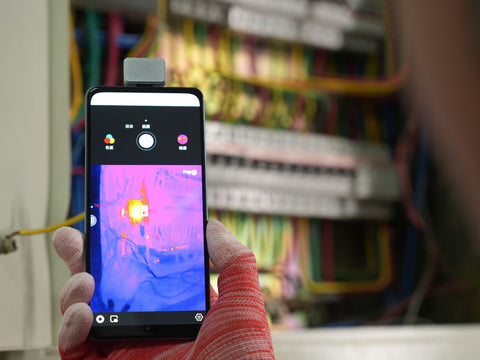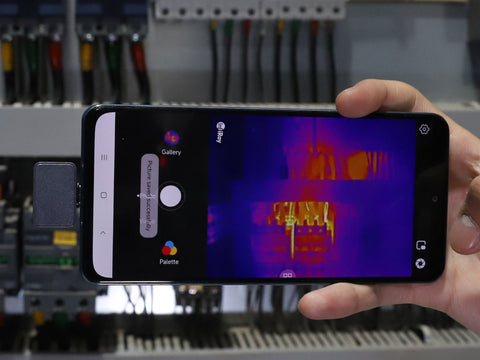Unique Ways To Monitor Power System: Unveiling Anomalies with Thermal Imaging
In the realm of power system monitoring, staying ahead of anomalies is paramount. These anomalies, if left undetected, can lead to costly failures, downtime, and even safety hazards. However, traditional monitoring methods may not always be sufficient to uncover underlying issues. That's where thermal imaging emerges as a unique and powerful tool in the arsenal of power system monitoring.
Understanding Thermal Imaging
Thermal imaging technology operates on the principle of detecting infrared radiation emitted by objects. By capturing this radiation and converting it into a visible image, thermal cameras can reveal temperature variations in the environment. This ability to visualize heat signatures makes thermal imaging particularly effective in identifying anomalies within power systems that may not be apparent through visual inspection alone.

Detecting Anomalies in Power Systems
Power systems are susceptible to various anomalies, including overheating components, loose connections, and insulation breakdowns. These issues can escalate quickly, leading to equipment damage or even catastrophic failures. Traditional monitoring methods such as periodic inspections or manual temperature measurements are often time-consuming and may not detect anomalies until it's too late. Thermal imaging, on the other hand, offers a proactive approach to anomaly detection by providing real-time thermal data, enabling early intervention and preventive maintenance.

Benefits of Thermal Imaging in Power System Monitoring
The advantages of integrating thermal imaging into power system monitoring are manifold. Firstly, it enhances safety by identifying potential hazards such as overheating equipment or electrical faults before they escalate into emergencies. Secondly, it enables early detection of anomalies, allowing for timely repairs or replacements to prevent costly downtime. Moreover, thermal imaging is a cost-effective solution compared to traditional monitoring methods, as it eliminates the need for manual inspections and reduces the risk of equipment damage.

Implementation and Best Practices
Implementing thermal imaging in power system monitoring requires careful planning and execution. It involves selecting the right thermal cameras, establishing monitoring protocols, and training personnel to interpret thermal data accurately. Additionally, regular calibration and maintenance of thermal equipment are essential to ensure reliable performance. By adhering to best practices, organizations can maximize the effectiveness of thermal imaging in detecting anomalies and maintaining the reliability of their power systems.

Future Trends and Innovations
The future of power system monitoring with thermal imaging holds exciting possibilities. Advancements in sensor technology and data analytics are paving the way for more sophisticated and intelligent monitoring systems. Machine learning algorithms can analyze vast amounts of thermal data to predict equipment failures before they occur accurately. Furthermore, the miniaturization of thermal cameras allows for integration into IoT devices, enabling continuous monitoring of power systems remotely.
In conclusion, thermal imaging offers a unique and effective approach to monitoring power systems, allowing for the early detection of anomalies and preventive maintenance. By harnessing the power of thermal technology, organizations can enhance safety, reduce downtime, and optimize the performance of their power infrastructure. As we look to the future, continued innovation in thermal imaging holds promise for even more advanced and comprehensive monitoring solutions.




